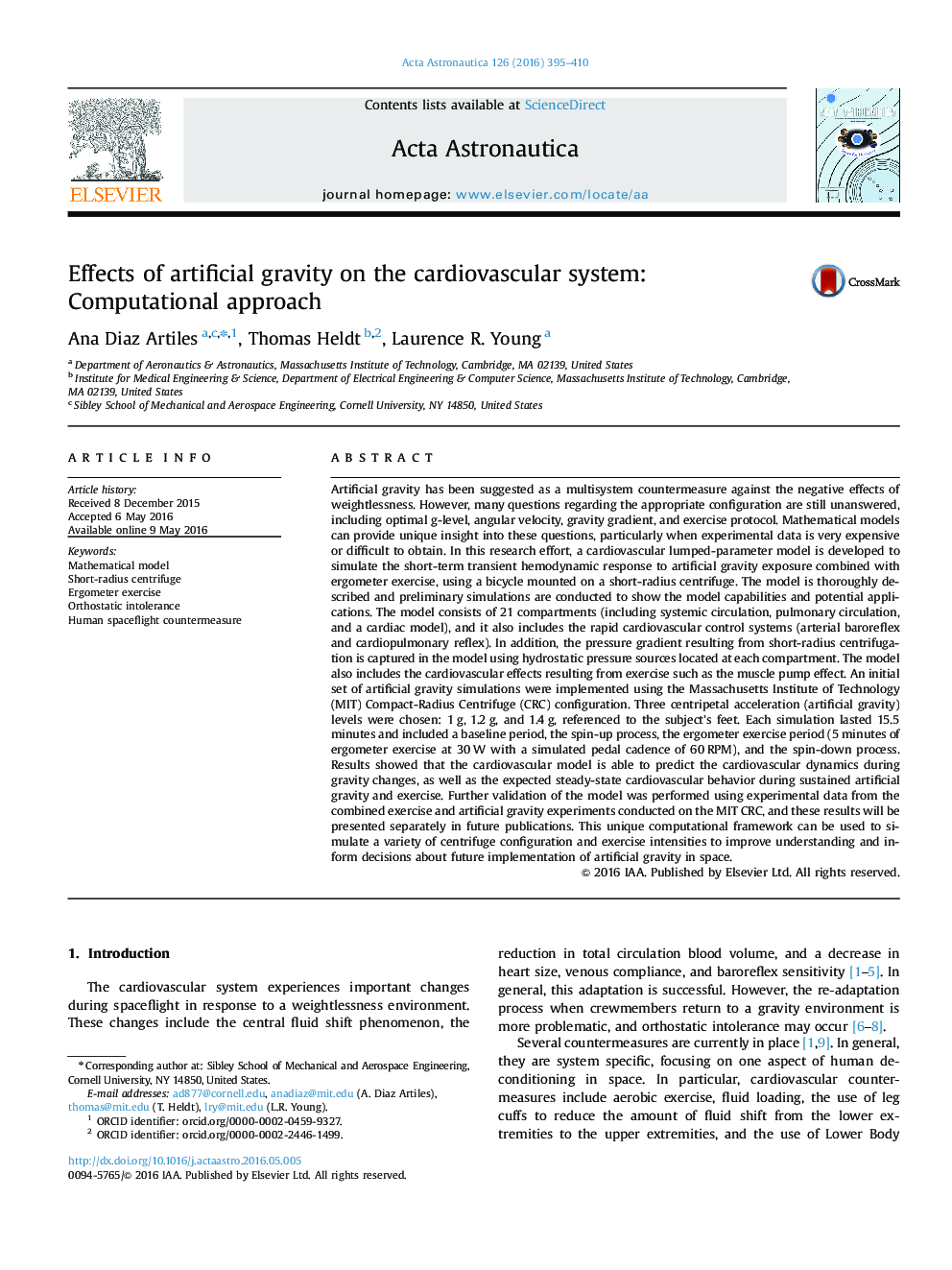| کد مقاله | کد نشریه | سال انتشار | مقاله انگلیسی | نسخه تمام متن |
|---|---|---|---|---|
| 8056169 | 1519928 | 2016 | 16 صفحه PDF | دانلود رایگان |
عنوان انگلیسی مقاله ISI
Effects of artificial gravity on the cardiovascular system: Computational approach
ترجمه فارسی عنوان
اثر گرانش مصنوعی بر سیستم قلبی عروقی: رویکرد محاسباتی
دانلود مقاله + سفارش ترجمه
دانلود مقاله ISI انگلیسی
رایگان برای ایرانیان
کلمات کلیدی
مدل ریاضی، سانتریفیوژ با شعاع کم ورزش ارگومنت، عدم تحمل ارتواستیک، مقابله با فضای فضایی انسانی،
موضوعات مرتبط
مهندسی و علوم پایه
سایر رشته های مهندسی
مهندسی هوافضا
چکیده انگلیسی
Artificial gravity has been suggested as a multisystem countermeasure against the negative effects of weightlessness. However, many questions regarding the appropriate configuration are still unanswered, including optimal g-level, angular velocity, gravity gradient, and exercise protocol. Mathematical models can provide unique insight into these questions, particularly when experimental data is very expensive or difficult to obtain. In this research effort, a cardiovascular lumped-parameter model is developed to simulate the short-term transient hemodynamic response to artificial gravity exposure combined with ergometer exercise, using a bicycle mounted on a short-radius centrifuge. The model is thoroughly described and preliminary simulations are conducted to show the model capabilities and potential applications. The model consists of 21 compartments (including systemic circulation, pulmonary circulation, and a cardiac model), and it also includes the rapid cardiovascular control systems (arterial baroreflex and cardiopulmonary reflex). In addition, the pressure gradient resulting from short-radius centrifugation is captured in the model using hydrostatic pressure sources located at each compartment. The model also includes the cardiovascular effects resulting from exercise such as the muscle pump effect. An initial set of artificial gravity simulations were implemented using the Massachusetts Institute of Technology (MIT) Compact-Radius Centrifuge (CRC) configuration. Three centripetal acceleration (artificial gravity) levels were chosen: 1Â g, 1.2Â g, and 1.4Â g, referenced to the subject's feet. Each simulation lasted 15.5 minutes and included a baseline period, the spin-up process, the ergometer exercise period (5 minutes of ergometer exercise at 30Â W with a simulated pedal cadence of 60Â RPM), and the spin-down process. Results showed that the cardiovascular model is able to predict the cardiovascular dynamics during gravity changes, as well as the expected steady-state cardiovascular behavior during sustained artificial gravity and exercise. Further validation of the model was performed using experimental data from the combined exercise and artificial gravity experiments conducted on the MIT CRC, and these results will be presented separately in future publications. This unique computational framework can be used to simulate a variety of centrifuge configuration and exercise intensities to improve understanding and inform decisions about future implementation of artificial gravity in space.
ناشر
Database: Elsevier - ScienceDirect (ساینس دایرکت)
Journal: Acta Astronautica - Volume 126, SeptemberâOctober 2016, Pages 395-410
Journal: Acta Astronautica - Volume 126, SeptemberâOctober 2016, Pages 395-410
نویسندگان
Ana Diaz Artiles, Thomas Heldt, Laurence R. Young,
